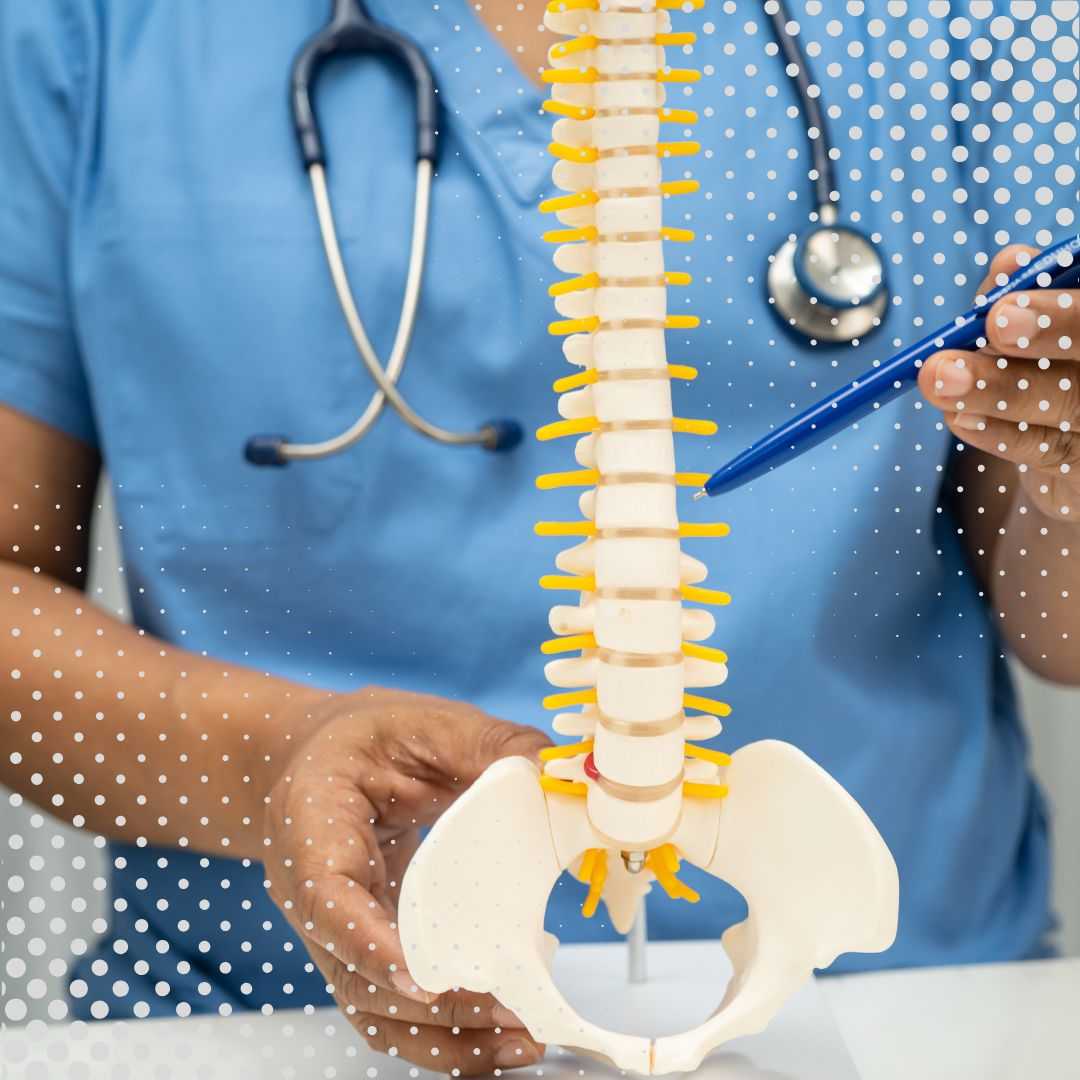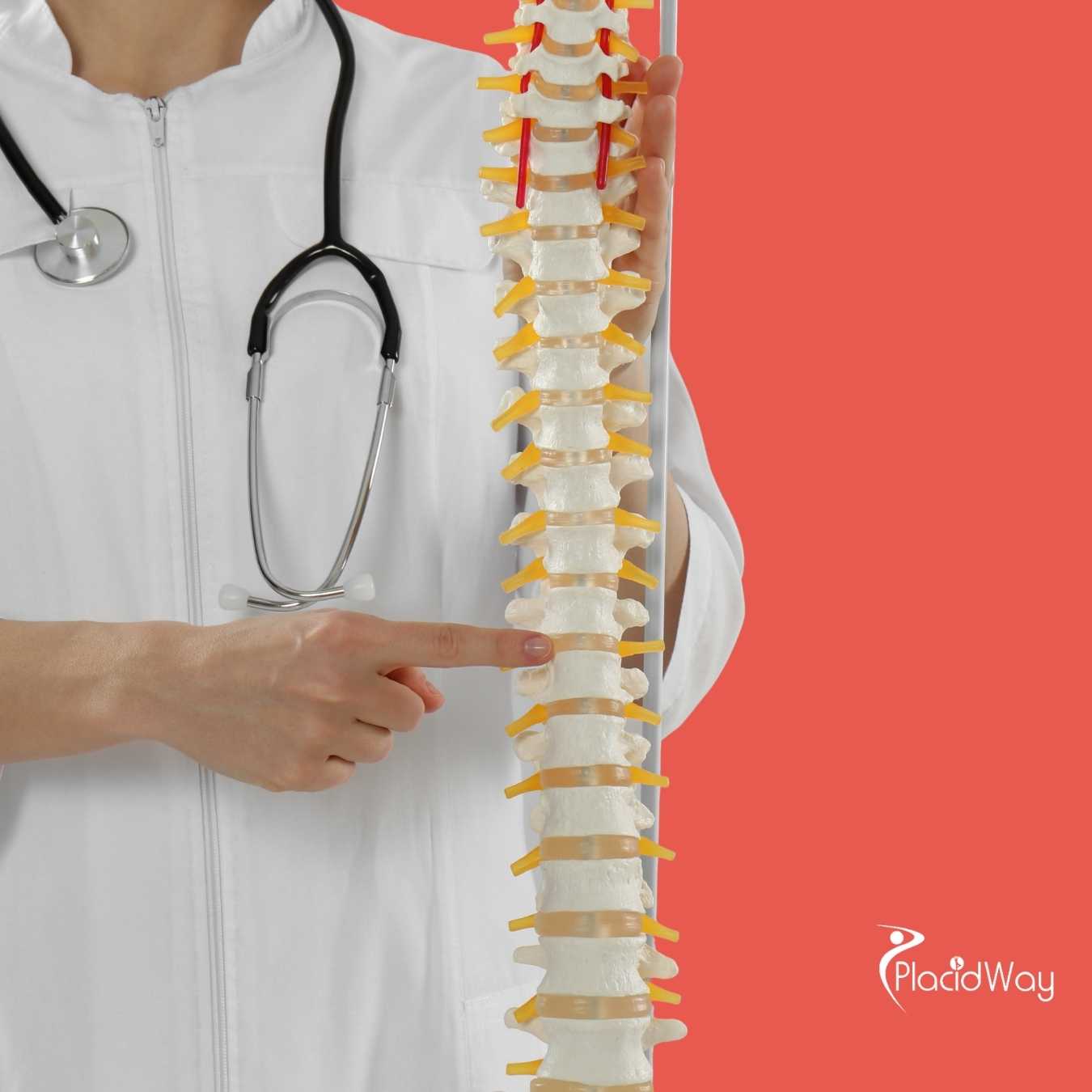The Promise of Stem Cell Therapy in Managing Celiac Disease
.png)
If you're living with celiac disease, you know how challenging it can be to manage your diet and symptoms. While a strict gluten-free diet is currently the only widely accepted treatment, many are naturally curious about emerging therapies that could offer more profound relief or even a cure. One such area of exciting research involves stem cells. Could these remarkable cells hold the key to a future where celiac disease is no longer a daily struggle? It's a question many are asking, and for good reason.
The concept of using stem cells to help celiac disease is rooted in their unique ability to regenerate damaged tissues and modulate the immune system. Think of them as your body's repair crew, capable of transforming into various cell types and coordinating healing processes. For individuals with celiac disease, this potential could mean repairing the damage to the small intestine caused by gluten exposure and calming the overactive immune response that attacks healthy tissue. This isn't about replacing the gluten-free diet entirely just yet, but rather exploring how we might address the underlying autoimmune mechanisms and physical damage associated with the condition.
Current scientific investigations into stem cell therapy for celiac disease are exploring various avenues, from laboratory studies to early-phase human trials. While it's crucial to understand that this research is still in its developmental stages and not yet a standard, approved treatment, the insights gained are incredibly valuable. We're delving into how specific types of stem cells might be harnessed to reduce inflammation, promote the repair of the intestinal lining (villi), and even retrain the immune system to tolerate gluten. The hope is that these advanced therapies could eventually provide a more comprehensive and lasting solution for those affected by celiac disease, moving beyond just dietary management. Let's explore the current understanding and what the future might hold.
Can Stem Cells Help Celiac Disease?
The potential for stem cells to help celiac disease is a topic of significant scientific interest. At its core, celiac disease is an autoimmune disorder where gluten ingestion leads to damage in the small intestine. Stem cell therapy aims to address this damage and the underlying immune dysfunction. Various types of stem cells, particularly mesenchymal stem cells (MSCs), are being investigated for their immunomodulatory and regenerative properties.
The proposed mechanisms involve stem cells traveling to sites of inflammation and injury in the gut. Once there, they can release powerful anti-inflammatory molecules, suppress the overactive immune cells that attack the intestinal lining, and promote the growth and repair of healthy intestinal cells, including the vital villi that absorb nutrients. This dual action of immune modulation and tissue repair holds promise for restoring normal intestinal function and reducing symptoms for individuals with celiac disease.
However, it's vital to underscore that while the concept is compelling and early results are promising, stem cell therapy for celiac disease is not yet a proven or widely available treatment. Most studies are in preclinical (laboratory and animal) stages or early-phase clinical trials, focusing on safety and initial efficacy. Significant research is still needed to confirm its long-term benefits, determine optimal dosing, and understand potential side effects before it could be considered a standard therapeutic option.
What Exactly is Celiac Disease?
Celiac disease is a serious autoimmune condition where the ingestion of gluten, a protein found in wheat, barley, and rye, leads to damage in the small intestine. This damage occurs when the immune system mistakenly attacks its own tissues in response to gluten, leading to inflammation and flattening of the villi, which are small, finger-like projections that line the small intestine and are crucial for nutrient absorption. This condition affects approximately 1 in 100 people worldwide.
The symptoms of celiac disease can vary widely among individuals, making diagnosis challenging. Common symptoms include:
- Digestive issues: abdominal pain, bloating, diarrhea, constipation, nausea, vomiting.
- Nutritional deficiencies: anemia (due to iron malabsorption), fatigue, weight loss, osteoporosis.
- Other symptoms: skin rashes (dermatitis herpetiformis), headaches, joint pain, nerve damage, depression, anxiety, and even infertility.
If left untreated, celiac disease can lead to severe health complications, including malnutrition, bone density loss, infertility, neurological disorders, and an increased risk of certain cancers like intestinal lymphoma. The primary and current standard treatment involves a strict, lifelong gluten-free diet, which allows the small intestine to heal and symptoms to improve. However, adherence can be difficult, and some individuals continue to experience symptoms despite strict dietary control, highlighting the need for alternative and complementary therapies like those explored with stem cells.
How Do Stem Cells Interact with Autoimmune Conditions Like Celiac Disease?
In autoimmune conditions such as celiac disease, the immune system becomes dysregulated, mistakenly attacking the body's own healthy tissues. Stem cells, particularly mesenchymal stem cells (MSCs), are known for their powerful immunomodulatory properties. This means they can influence the behavior of various immune cells, helping to restore balance to an overactive or misdirected immune response. They don't just act as simple repair cells; they are conductors of a complex biological symphony.
When introduced into the body, MSCs can secrete a wide array of bioactive molecules that:
- Suppress inflammatory cells: They can inhibit the proliferation and activity of T-cells and B-cells, which are key players in autoimmune attacks, and reduce the production of pro-inflammatory cytokines.
- Promote regulatory cells: They encourage the development of regulatory T-cells (Tregs), which are crucial for maintaining immune tolerance and preventing autoimmune reactions.
- Induce apoptosis: In some cases, MSCs can trigger the programmed cell death of harmful immune cells, effectively clearing them from the system.
Beyond immune modulation, stem cells also contribute to tissue regeneration. In celiac disease, the small intestinal lining is damaged. Stem cells can migrate to these damaged areas and release growth factors and other molecules that stimulate the repair and regeneration of the epithelial cells and villi, directly counteracting the tissue destruction caused by the autoimmune response. This dual capability—calming the immune system and repairing tissue—makes stem cells a fascinating area of research for conditions like celiac disease.
What Types of Stem Cells are Explored for Celiac Disease Treatment?
While there are various types of stem cells, research into stem cell therapy for celiac disease predominantly focuses on Mesenchymal Stem Cells (MSCs). These multipotent stromal cells can be isolated from several tissues, including bone marrow, adipose (fat) tissue, umbilical cord blood, and even dental pulp. MSCs are particularly attractive for treating autoimmune conditions because of their well-documented ability to suppress inflammation and promote tissue repair without eliciting a significant immune reaction themselves, making them suitable for allogeneic (donor-derived) transplantation.
Key characteristics of MSCs that make them suitable for celiac disease research include:
- Immunomodulation: They can dampen overactive immune responses by interacting with T cells, B cells, dendritic cells, and natural killer cells.
- Anti-inflammatory effects: MSCs secrete a range of anti-inflammatory cytokines and growth factors that can reduce the inflammatory cascade in the gut.
- Regenerative potential: They can differentiate into various cell types, including intestinal epithelial cells, and foster the repair of damaged tissues, such as the intestinal villi.
- Low immunogenicity: MSCs generally do not trigger a strong immune response when transplanted, which simplifies their use in therapy.
Other types of stem cells, such as hematopoietic stem cells (HSCs) found in bone marrow, are used in some severe autoimmune conditions but typically involve more intensive procedures and significant risks, primarily due to the need for immunosuppression. For celiac disease, the current focus remains largely on MSCs due to their favorable safety profile and targeted therapeutic actions. Research continues to explore the optimal source, dose, and delivery methods for these powerful cells to effectively treat the complex pathology of celiac disease.
Are There Clinical Trials for Stem Cell Therapy in Celiac Disease?
The journey of any new medical treatment, including stem cell therapy, involves rigorous testing through various phases of clinical trials. For celiac disease, researchers are actively conducting studies to understand if stem cells can safely and effectively help patients. Most of this research is still in the preclinical stages (laboratory and animal studies) or early-phase human clinical trials (Phase 1 and Phase 2).
These early-phase trials primarily aim to:
- Assess Safety: Determine if the stem cell therapy is safe for human use and identify any potential adverse reactions or side effects.
- Determine Optimal Dosage: Find the right amount of stem cells needed to achieve a therapeutic effect without causing harm.
- Explore Preliminary Efficacy: Gather initial data on whether the therapy shows any signs of improving symptoms, intestinal healing, or immune modulation in patients with celiac disease.
It's important to differentiate between legitimate clinical trials and unproven therapies offered by some clinics. Legitimate trials are typically registered with national health authorities and follow strict ethical and scientific guidelines. While the results from these early trials are essential for progressing scientific understanding, they do not yet indicate that stem cell therapy for celiac disease is a proven or approved treatment. Patients interested in participating in such trials should always consult with their healthcare provider and seek information from reputable sources to ensure they are engaging in ethical and scientifically sound research.
What are the Potential Benefits and Risks of Stem Cell Therapy for Celiac Disease?
As an emerging field, stem cell therapy for celiac disease carries both exciting potential benefits and inherent risks, particularly because it's still experimental. Understanding these aspects is crucial for anyone considering or following the research.
Potential Benefits:
- Intestinal Healing: Stem cells could help repair the damaged intestinal villi, restoring proper nutrient absorption and alleviating digestive symptoms that persist despite a gluten-free diet.
- Immune Modulation: By calming the overactive immune response, stem cells might prevent further autoimmune attacks on the small intestine, potentially offering a more fundamental solution than just avoiding gluten.
- Reduced Inflammation: The anti-inflammatory properties of stem cells could significantly reduce the chronic inflammation associated with celiac disease, leading to improved overall gut health and reduced discomfort.
- Improved Quality of Life: For those who struggle with strict dietary adherence or persistent symptoms, successful stem cell therapy could dramatically improve their quality of life by reducing reliance on a gluten-free diet or minimizing lingering issues.
Potential Risks:
- Infection: As with any medical procedure involving injections or manipulations, there's a risk of infection at the injection site or systemic infection.
- Immune Reaction: Although MSCs have low immunogenicity, there's always a slight chance of an adverse immune reaction to donor cells.
- Tumor Formation: While rare with MSCs, some types of undifferentiated stem cells have the theoretical risk of forming tumors (teratomas). Rigorous processing and purification protocols aim to mitigate this risk.
- Ineffectiveness: The therapy might not work for all individuals, or the effects might be temporary.
- Unknown Long-Term Effects: Since it's an experimental treatment, the long-term safety and efficacy of stem cell therapy for celiac disease are not fully established.
- Regulatory Concerns: Unregulated clinics offering unproven stem cell therapies pose significant risks, including fraudulent claims, unsafe procedures, and lack of oversight.
It is vital for individuals to be fully informed about these aspects and to consult with medical professionals when considering any experimental treatments.
Is Stem Cell Therapy for Celiac Disease a Widely Available or Standard Treatment?
Currently, stem cell therapy for celiac disease is not recognized as a standard medical treatment by major health organizations or regulatory bodies worldwide. The primary and recommended treatment for celiac disease remains a strict, lifelong gluten-free diet. While exciting research is underway, stem cell therapy for this condition is still considered experimental.
This means that you won't typically find stem cell therapy for celiac disease offered as a routine option in most hospitals or clinics. Treatments that are considered "standard" have undergone extensive testing through multiple phases of clinical trials, demonstrating clear safety and efficacy, and have received approval from regulatory agencies (like the FDA in the United States or the EMA in Europe). Stem cell therapy for celiac disease has not yet reached this stage.
Therefore, if you encounter clinics offering stem cell therapy for celiac disease outside of a formal, ethical clinical trial, it's essential to exercise extreme caution. These clinics may be operating without proper regulatory oversight, offering unproven treatments that could be ineffective, unsafe, or extremely costly. Always consult with a qualified gastroenterologist or immunologist who specializes in celiac disease to discuss all available and legitimate treatment options.
Where Can One Seek Stem Cell Therapy for Celiac Disease Through Medical Tourism?
For those interested in experimental therapies like stem cell therapy for celiac disease, medical tourism destinations can seem like a viable option. Certain countries have more relaxed regulatory environments or a higher number of private clinics offering such treatments, often marketing them directly to patients. Destinations frequently mentioned in the context of experimental stem cell therapies include:
- Germany: Known for its advanced medical infrastructure and some specialized clinics that offer various regenerative treatments.
- Mexico: Several clinics near the U.S. border provide a range of stem cell therapies, often at a lower cost than in Western countries.
- Thailand: A popular medical tourism hub, with some facilities offering alternative and regenerative medicine.
- Eastern European Countries: Nations like Ukraine or Russia have also seen the emergence of clinics specializing in stem cell treatments.
However, it is paramount to understand the significant risks involved with seeking experimental stem cell therapy for celiac disease abroad. These risks include:
- Lack of Regulation: Clinics in some countries may operate with less stringent oversight compared to highly regulated medical systems, leading to unverified claims, unsafe practices, and potentially harmful treatments.
- Unproven Efficacy: The treatments offered are often not backed by robust scientific evidence from controlled clinical trials.
- Safety Concerns: Patients may face risks of infection, adverse immune reactions, or other serious complications due to non-standardized procedures.
- High Costs: These therapies are typically very expensive and are usually not covered by health insurance, leaving patients with significant financial burdens and potentially no benefit.
- Ethical Issues: Some clinics may exploit vulnerable patients by offering false hope or exaggerating potential outcomes.
Before considering any form of medical tourism for experimental stem cell therapy, consult extensively with your trusted local medical professionals. They can provide an honest assessment of the current scientific evidence and guide you toward ethical and safe options, which, for celiac disease, are primarily within approved clinical trials.
What is the Estimated Cost of Stem Cell Therapy for Celiac Disease in International Clinics?
The cost of experimental stem cell therapy for celiac disease, particularly when sought through medical tourism, is highly variable and can be substantial. Since these treatments are not standardized or approved, there is no fixed pricing structure. Clinics offering these therapies set their own prices, which can differ dramatically based on several factors:
Factors influencing the cost:
- Clinic Reputation and Location: Highly marketed clinics in popular medical tourism destinations may charge more.
- Type and Source of Stem Cells: Autologous (patient's own) stem cells versus allogeneic (donor) stem cells can impact preparation costs.
- Number of Cells and Injections: The quantity of stem cells administered and the number of treatment sessions will influence the total price.
- Included Services: Some packages might include consultations, diagnostic tests, follow-up care, accommodation, or travel coordination, while others only cover the procedure itself.
- Country's Healthcare Costs: Overall healthcare costs in the country where the clinic is located will play a role.
Patients should expect a wide range, generally falling between $5,000 and $30,000 or even more for a single course of treatment. It is crucial to remember that these costs typically do not include travel, accommodation, or any necessary follow-up care that might be required back home. Furthermore, health insurance plans almost universally do not cover experimental treatments like unapproved stem cell therapy, leaving patients to bear the entire financial burden themselves. Given the experimental nature and unproven efficacy of these therapies for celiac disease, individuals should carefully weigh the financial investment against the uncertain potential benefits and known risks.
How Can I Ensure I Choose a Reputable Clinic for Celiac Stem Cell Therapy Abroad?
Navigating the landscape of experimental stem cell therapies, especially abroad, requires extreme vigilance. Since stem cell therapy for celiac disease is not a standard treatment, identifying a reputable clinic is challenging but critical to avoid scams and ensure safety. Here are key steps to consider:
- Focus on Clinical Trials: The most legitimate and ethical way to access experimental stem cell therapy is by participating in an approved clinical trial. Research trials are meticulously regulated, and patient safety is paramount. Check reputable databases like ClinicalTrials.gov (for trials worldwide) or national registries for studies on celiac disease or related autoimmune conditions involving stem cells.
- Verify Accreditations and Credentials: If considering a private clinic, investigate their accreditations. Look for international accreditations (e.g., Joint Commission International - JCI) and affiliations with established medical institutions or universities. Ensure the medical staff are board-certified and have extensive experience in gastroenterology, immunology, and regenerative medicine.
- Demand Scientific Evidence: A reputable clinic will be transparent about the scientific basis of their treatments. They should be able to provide peer-reviewed research, not just testimonials, supporting their approach. Be wary of clinics that promise cures or miraculous results, as this is a red flag for unproven therapies.
- Consult Independent Medical Experts: Before making any decisions, discuss your interest with your local gastroenterologist or immunologist. They can provide an unbiased perspective on the current scientific consensus, potential risks, and whether the proposed treatment aligns with ethical medical practices.
- Review Patient Experiences with Caution: While patient testimonials can be compelling, they are anecdotal and do not substitute for scientific evidence. Some unscrupulous clinics fabricate reviews. Look for patterns, but always verify claims with official data.
- Understand the Regulatory Environment: Research the medical regulations of the country where the clinic is located. A more permissive regulatory environment might mean less oversight and higher risks.
Ultimately, because stem cell therapy for celiac disease is still in its early research stages, extreme caution is warranted. Your health and safety should be the top priority, and that often means sticking with proven treatments or participating only in well-regulated clinical trials.
We understand the challenges faced by individuals seeking advanced healthcare solutions, especially for complex conditions like celiac disease. If you are exploring various treatment options or seeking highly specialized medical care, PlacidWay can help you navigate the landscape of global healthcare. We connect patients with internationally accredited medical facilities and experienced specialists, offering a transparent platform to research, compare, and coordinate a wide range of medical treatments and medical tourism opportunities. Explore PlacidWay to find potential solutions tailored to your unique health journey.


.png)









Share this listing